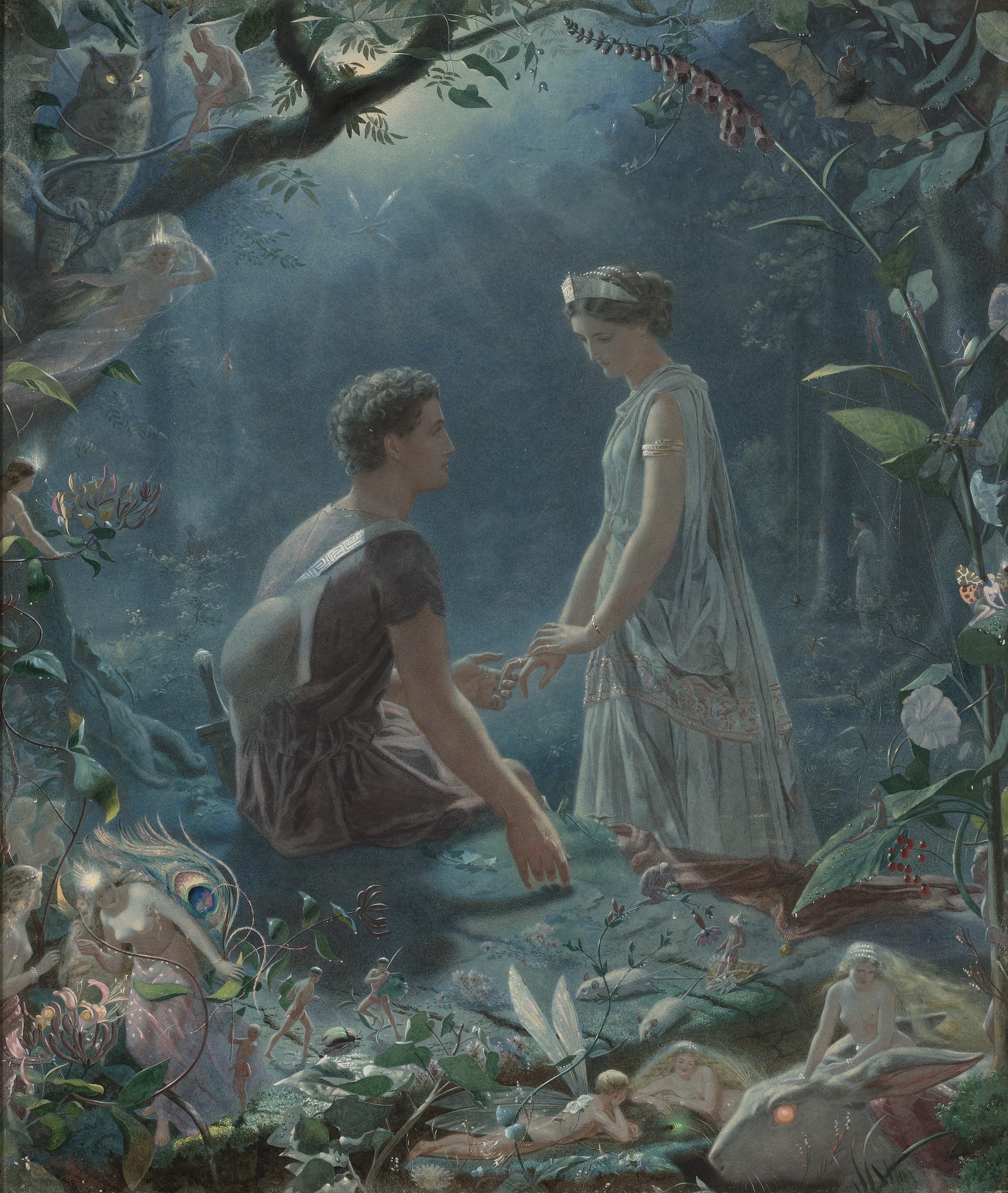
watercolour
89 cm × 74 cm (35 in × 29 in)
Wikimedia Commons
Hermia and Lysander is a watercolour painting created in 1870 by the English illustrator and miniature portrait painter John SimmonsEnglish painter and illustrator, recognised as a specialist in painting female fairies, frequently nude., based on a scene from Act II, scene II of William Shakespeare’s comedy play A Midsummer Night’s Dream.[1]
Paintings of fairiesGenre of art and illustration featuring small imaginary human-like creatures with magical powers, often with wings. had a resurgence in popularity during the 19th century, many of them based on scenes from A Midsummer Night’s Dream; Simmons produced several pieces in this genre.[2] According to Christopher Wood, an expert in Victorian art,[3] the details included in Simmons’ fairy paintings were “executed with an astonishing clarity” and gave the impression they had been painted on a glass surface.[4] The majority of Simmons’ depictions of fairies were of naked females, which Wood considered them to be the “bunny girls of the Victorian era”.[5]
A watercolour painting using gouacheOpaque watercolour in which the pigments are bound together by glue.,[6] the artwork shows Hermia with her lover Lysander when they are lost in an enchanted wood. The couple are surrounded by a community of fairies; some are pictured in flight using their delicate wings, others are transported in chariots shackled to mice. The couple are tired and disorientated, appearing unaware of the crowds of animals and fairies around them. Lysander is seated and touching Hermia’s fingers with one hand while indicating the soft forest moss with his other hand. It is the point in the tale of A Midsummer Night’s Dream when he invites her to rest, saying:[1]
One turf shall serve as pillow for us both;
One heart, one bed, two bosoms and one troth.[1]
The painting achieved a sale price of £42,470 when auctioned in New York by Sotheby’s in May 2012, a record price for work by this artist.[7] It had previously been auctioned by Sotheby’s in London on 19 June 1984 and a decade later by Sotheby’s, New York, on 25 May 1994, when it was wrongly attributed to Julius Simmons.[1]
